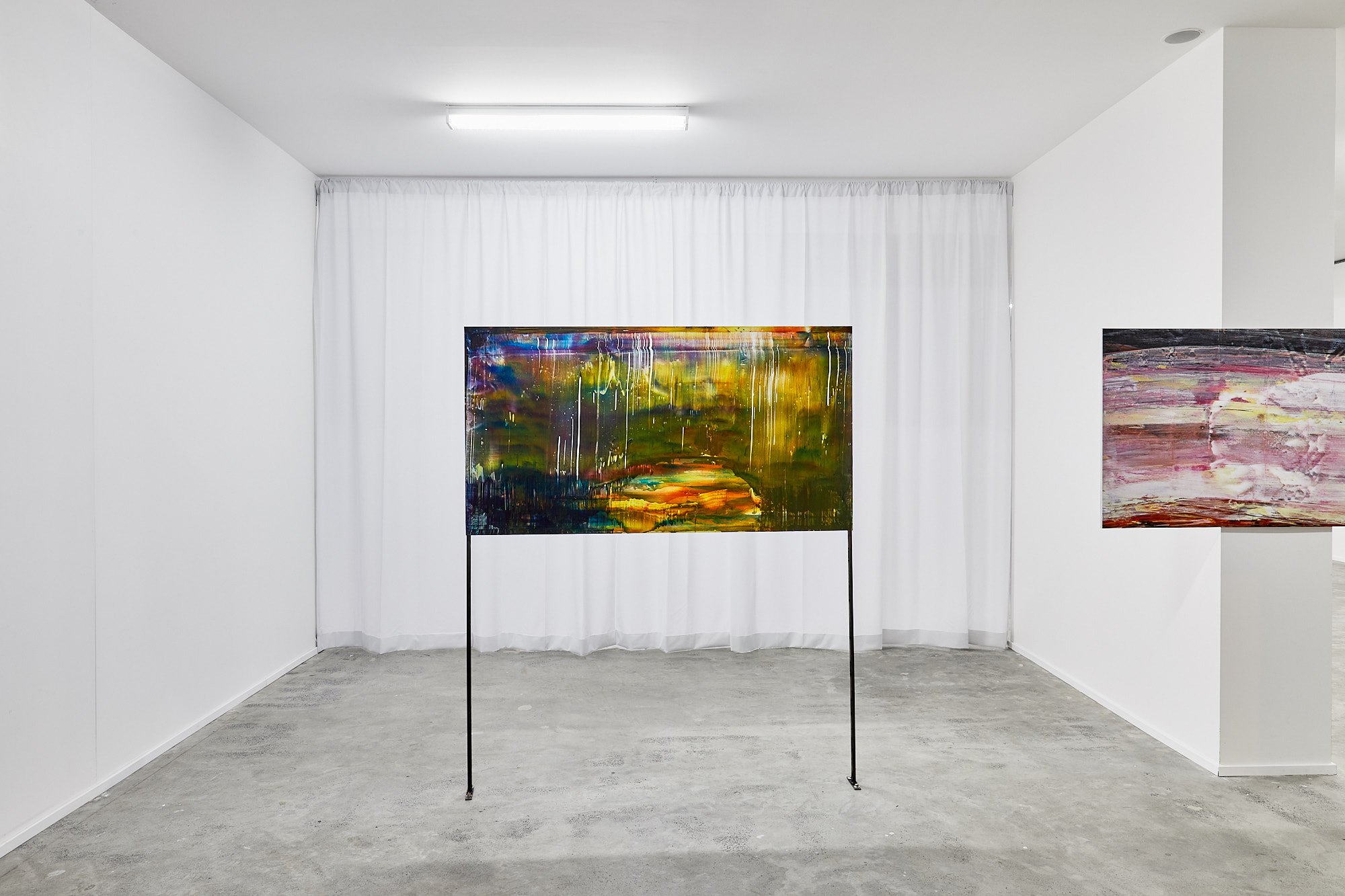End Frames
End Frames
End Frames
COMA, Sydney
2017
Acrylic and pigment on Alumacorr
152.5 x 81 cm
COMA is pleased to present End Frames by Emanuel Röhss, the artist’s first solo exhibition in Australia. With this project Röhss has turned to notions of cinematic space and imagination as well as concerns specific to the processes of painting.
Throughout the past twelve months the artist has devised a body of work solelythrough the painting medium, which he has utilized to explore the dual cinematic ‘finale’ of narrative and imagery in movies. End Frames stems from the artist’s pondering on the essence of final frames: The End, so to speak.
The selection criteria for the artist was such that each film should display a finite end. For instance, the final scene had to convince the artist beyond reasonable doubt of the impossibility of a continuation of the plot: No sequel. This could be conveyed through entirely cataclysmic endings (Dr. Strangelove; Melancholia); end sceneswhere the protagonist(s) are removed from the world in which the story is set (The Quiet Earth); movies that end with the killing of the protagonist (The Wicker Man, Easy Rider, Butch Cassidy and the Sundance Kid), but also less violent endings where the main characters leave everything behind in a more dreamy, erotic and ambiguous way (Blade Runner, True Romance,).
The paintings in End Frames are made on Alumacorr panels cut to the dimensions 32” x 60“, which corresponds with one of the most common aspect ratios in which features are shot; 1.85:1 widescreen cinema. The chromatically disparate registers of the paintings are consequential of the final frame(s) from which each work departs and suggest the varied palettes used in their production. Similarly, the traces of paint application, which evidently suggests that a variety of process have been utilized, relates to the subjective experience that the artist had of the selected films. Three distinctively different methods can be identified: In some instances paint was sprayed wet upon wet creating hazy, yet super flat surfaces. Other works were produced by directly adhering only dry pigments to the Alumacorr, or by scraping or smearing different color paints onto a plastic film, which generated a “paint skin” that was subsequently attached to the panels. These modes of material handling where chosen based on Röhss’ response to the respective films as well as the idea of what was left behind after their closings.
Making and arranging work in conversation with a specific architecture or gallery space has been at the core of Röhss’ exhibition practice. Still, given that the artist embarked on the paintings in curiosity about final filmic moments rather than upon the request to fill up a space, their relationship to this gallery space came to be a matter of consideration in the later part of the project. Nevertheless, there is a conspicuous tactic employed in the system of their presentation. The compartmentalization of the gallery space, in order to generate three zones, is an attempt to arrange the viewer’s encounters with the work into a beginning, middle and end, similar to the organization of a traditional filmic narrative. By this logic, a couple of the works grew limbs, or more precisely legs, as to subsume more to the zonal order of things than the existing walls in the gallery.
Ostensibly, a kind of formal exercise has taken place in the production of these works. But, is it possible to more concretely define the artist’s intention in conceiving them? To induce an appearance of the ‘residual image’, or vanished narrative of films? As a form of impressionistic painting or presentation of the artist’s reverie about moving images becoming dormant? Speculatively at least, one could say the self-made terms of this project have allowed the artist to use a visual language in more subtle ways than employed in earlier works, to interrogate the junction between cinema as a corporeal configuring of human imagination and the absence thereof as its abstruse Doppelgänger.
Blade Runner
Butch Cassidy and Billy the Kid
Dr. Strangelove
True Romance
Bird Man
Easy Rider
The Rapture











